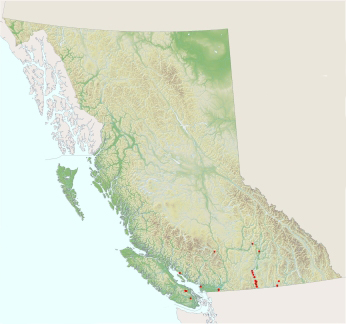A large family, but poorly represented in our region. B.C. has only six species and the Yukon appears to have none (although two species may live in the southeast). Compared to some other families, clubtails are not common here, but they are easily recognizable by their widely separated eyes and their green or yellow bodies striped in brown and black. The tip of the abdomen, especially in males, is enlarged, giving them their English name. Females lack an ovipositor and drop their eggs directly into clear streams and along the sandy shallows of larger lakes; they lay their eggs without the protection of their mates. Larvae burrow in the bottom sediments of these water bodies.
|
Uncommon denizen of sunny stream banks and sandy lakeshore beaches at low elevations. The only clubtail on Vancouver Island, where the best place to see it is along the Nanaimo River.
|
|
